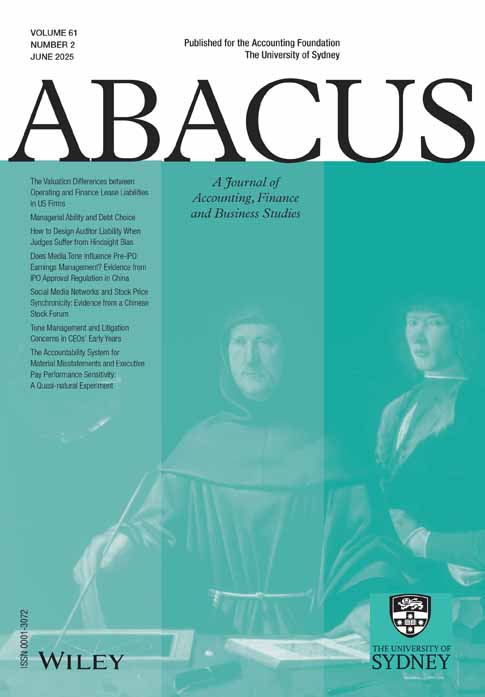The Valuation Differences between Operating and Finance Lease Liabilities in US Firms
The authors are grateful to workshop participants at Arizona State University, Iowa State University, the University of North Carolina at Chapel Hill, Purdue University, San Diego State University, The College of William and Mary, and the University of Texas at El Paso, as well as Leonce Bargeron, Lynn Rees, and Wendy Wilson for their comments and suggestions. Given the paper relates to Lindsey's dissertation, he also thanks his dissertation committee members Wayne Landsman (co-chair), Ed Maydew (co-chair), John Hand, Matthias Kahl, and Jana Smith Raedy for their direction and input.
In addition, we thank Morgan Hendricks, Hilary Murray, Allyson Rawson, and Andrew Zilles for their excellent research assistance.
Abstract
In February 2016, the FASB issued Accounting Standards Update (ASU) 2016-02, which effectively requires the capitalization of all leases longer than one year. However, due to concerns that leasing classifications capture economic differences among leases, the new standard maintains separate classifications of operating and finance leases on the balance sheet, and the bright-line tests required under SFAS 13 effectively remain. In this paper, we shed light on the FASB's decision to maintain lease classifications in the new leasing standard by examining the relative valuation implications of operating and finance lease liabilities under ASU 2016-02 and whether these valuation coefficients changed under this new standard. We find that the valuation coefficient on operating lease liabilities differs from that on finance lease liabilities, suggesting that separately reporting these lease liabilities provides value-relevant information. We also examine the relative valuation implications of as-if-capitalized operating lease liabilities and finance lease liabilities under SFAS 13, and we again find that the valuation coefficients differ across these lease classifications, suggesting that the FASB's decision to retain these classifications preserved value-relevant information used by investors under SFAS 13. Finally, we find that the valuation coefficient on operating lease liabilities increased under ASU 2016-02 relative to under SFAS 13, consistent with the incomplete revelation hypothesis (Bloomfield, 2002). Our paper reinforces the importance of separating operating and finance lease liabilities to provide useful information for valuation and supports the FASB's decision to maintain separate lease liability classifications under ASU 2016-02.
Open Research
Data Availability
All data utilized in this paper are available from the publicly available sources referenced in the text.




